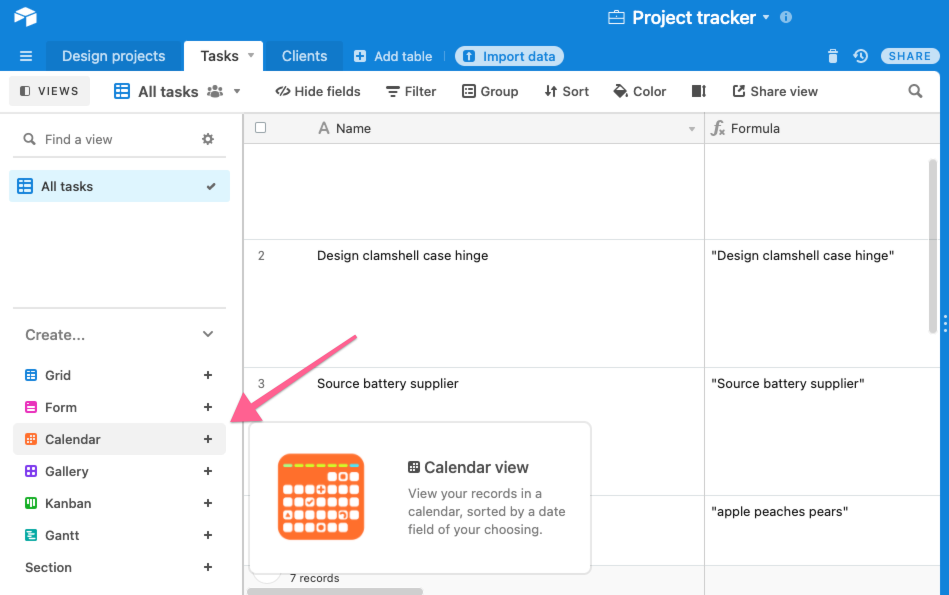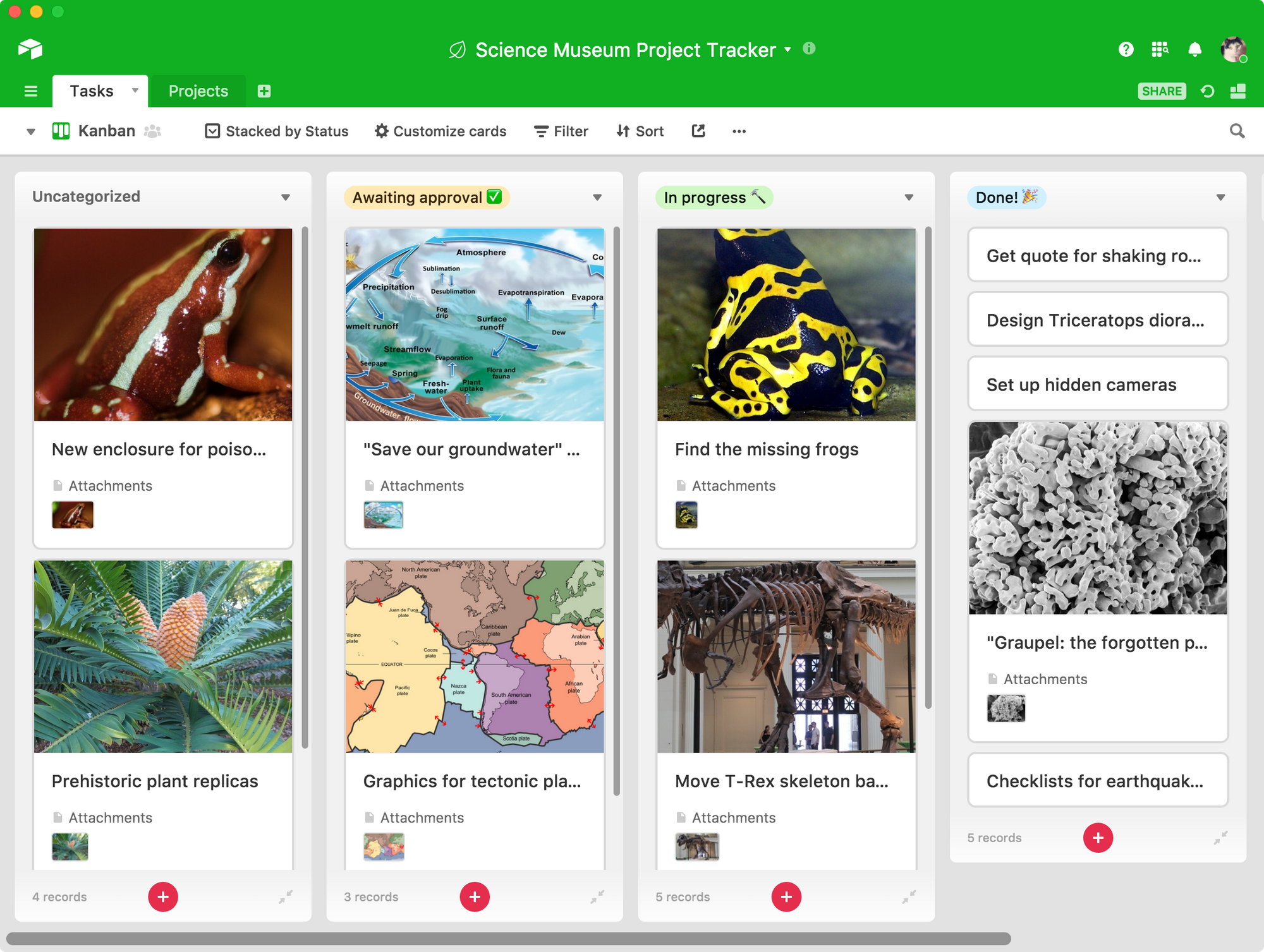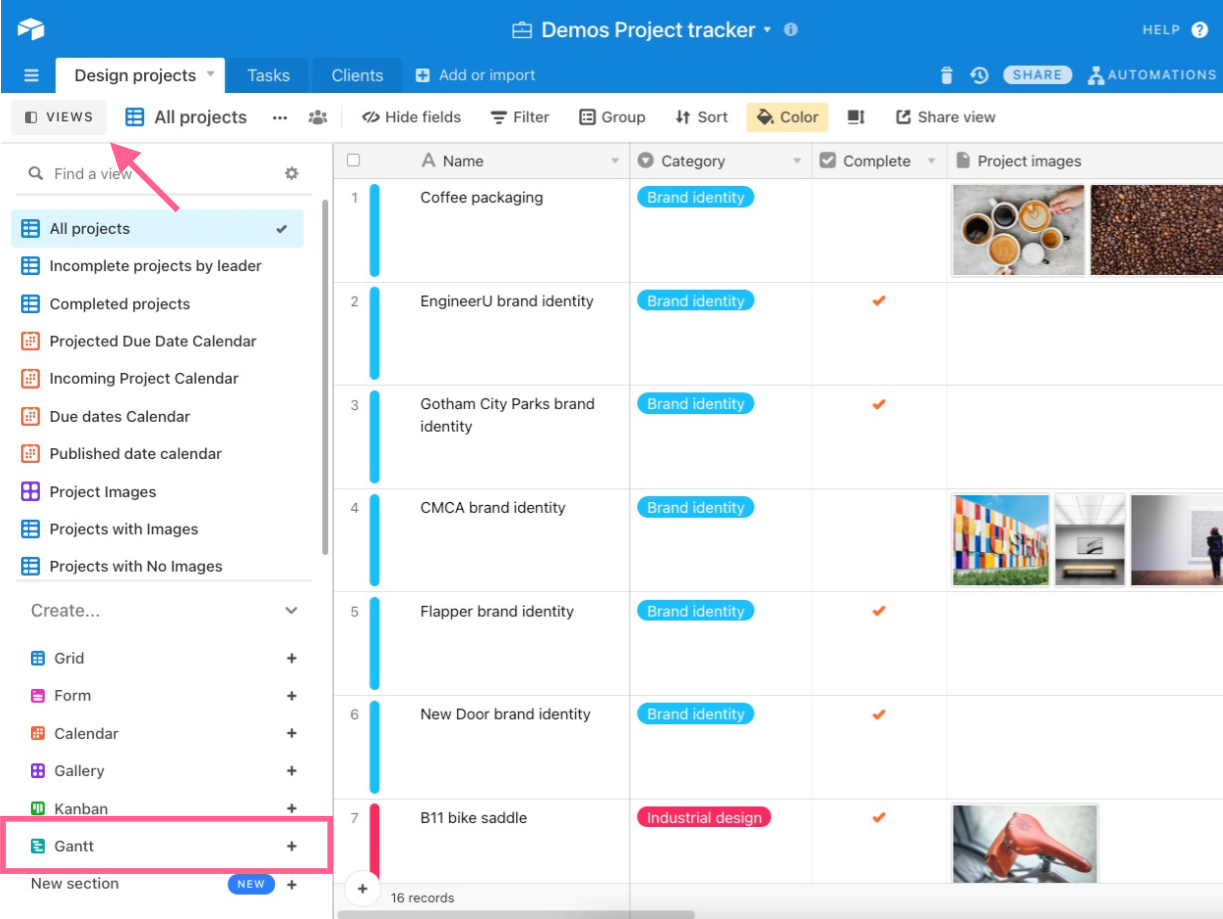You know how some people knock out heaps of work before breakfast, while others struggle to finish a single to-do? People who get things done don’t have super powers. Whether they know it or not, they’ve just mastered the art of task management.
At its most basic, task management is the process of defining your projects, breaking them down into smaller, manageable action items, and prioritizing those tasks on an ongoing basis. You’ll know you’re managing your tasks well if you have clear action items to accomplish every day, and feel confident that your projects are on track.
In this article, we’ll cover everything you need to know about task management.
- What is task management?
- What are the benefits of task management?
- How should I visualize my tasks?
- Do I need a task management tool?

What is task management?
Task management is the practice of tracking a task through to completion. Most people do some type of task management, without thinking about it, every day. Even making your morning coffee requires you to break down a larger project (“make coffee”) into smaller steps (“grind coffee,” “change filter,” etc). But when you're delivering a project in a work setting, task management typically refers to activities like:
- Defining task requirements—Task management requires you to define the materials or documents you need to complete a project, along with relevant dates, deadlines, and people involved.
- Managing stakeholders and collaborators—While some tasks can be accomplished independently, others will involve wrangling your partners for reviews and contributions. Even independent tasks can be part of a shared project, meaning you’ll need strong communication and clear hand-offs.
- Prioritizing tasks in context of other work—To manage your daily tasks, you need a system to help you prioritize tasks against one another. Within a single project, some tasks move to the front of the line because they have more impact or because they come with more built-in dependencies. Working on multiple projects at once? You’ll also need to prioritize those projects in order of importance.
Learn how to set SMART goals with Airtable.
What are the benefits of task management?
On an individual level, task management makes you more confident in your daily to-dos—and more effective at crossing them off the list. But the benefits of task management extend beyond the individual; better-organized individuals lead to broadly more effective teams and ultimately better visibility for leadership.
Helps team members focus on the right tasks
Say you are a designer in charge of creating graphics for your team and have just received three separate design requests. Your impulse might be to work on your three new design tasks in the order you received them, or based on their deadline. But if you've built a task management framework to help you prioritize, you might ask for key details (like major dependencies) as part of the request. One project might have a nearer deadline, but another requires sign-off from more stakeholders. So you start with that one first.
As a result, you have a better sense of when to start each task—and the projects that make an impact on the business when they get done first.
A clear prioritization framework becomes increasingly important when teams have a high volume of tasks. That’s because a human’s ability to multitask isn’t as great as we might think. One study showed that only 2.5% of people can multitask effectively; the rest of us are simply bouncing back and forth between tasks, an act that's actually making us less efficient.
Creates more transparency
Documentation is a big part of strong task management. The point isn’t to prioritize and allocate resources in your head, but to map them out in a clear, easily shareable way. Teams that invest in task management have better visibility into everyone else’s task lists. For project managers and leaders, this means you can quickly diagnose an imbalance in workload when you know what’s on your team’s plates. This minimizes common productivity killers, like bottlenecks caused by a lack of information, or a lack of understanding around why certain tasks are critical.
The best way to maintain maximum transparency is to give everyone access to a tool that helps facilitate task management—ideally in a transparent way.
Supports more efficient workflows
Efficient teams get work done faster and with fewer resources. Task management naturally leads to more efficient production because it minimizes confusion, surfaces blockers, and tees up tasks at the best time.
Task management and workflows go hand in hand because a workflow is, in essence, a repeatable series of tasks that make up a process. Manage tasks effectively, and your workflows will, well, flow.
> Check out: What is a workflow?
How should I visualize my tasks?
Documentation is a critical part of task management, and most teams find that a simple to-do list or shared spreadsheet doesn’t do the trick. Most task management tools will help you visualize your tasks, so you can quickly ascertain what’s complete, what’s active, and what’s next.
Visualizing tasks in a calendar
- Using a calendar puts your tasks on a defined timeline that everyone can easily understand. For obvious reasons, a calendar view works best when you have clear due dates or are completing work during set periods of time. A calendar is also helpful, in combination with a Gantt chart, when you're managing a project with multiple deliverables and due dates.

Visualizing tasks in a kanban board
- A kanban board is an agile project management tool that puts all of your tasks into cards and columns on a large board so you can visualize them quickly. You can drag and drop task cards into status-specific columns (e.g."to-do", "doing", and "done"). Product developers commonly use kanban boards for task management, and it's ideal for any situation where you're working on several tasks simultaneously and/or have multiple team members working together on a project that ties many tasks together.

Visualizing tasks in a Gantt chart
- A Gantt chart looks like a horizontal bar chart. Also popular in product development for its ability to represent a large variety of information in a highly organized way, Gantt charts show the projected start and finish dates of different tasks and project milestones. This type of chart succinctly communicates several things, including: a project’s tasks, schedule, resources, milestones, and dependencies. It's a great option if you like combining all of the benefits of a list, kanban board, and calendar into one.

Do I need a task management tool?
We’ve already stressed the need for documentation—of details and metadata, of processes, and of the tasks themselves. But it isn’t enough to document your process and then keep it to yourself. Most teams find that some kind of shared tool is necessary to create a source of truth among multiple collaborators or stakeholders.
If you’re shopping for tools, here are four things to look for:
- Visibility and customization. You want to be able to share your planned tasks and progress toward completion with your team, as needed. Ideally, you can customize what you share—your CMO might not need to know that you’re sending feedback to a contractor today, but they’re probably curious about overall timelines on the larger project. That contractor, on the other hand, needs a much more granular view (when should they expect edits?), but doesn’t need to know when you’ve pushed an adjacent campaign live. The tool you use to manage tasks should give you this flexibility.
- Ability to automate steps. Depending on your workflow, you might have certain required tasks. For example, before a tweet goes live, it must be approved by your head of Communications—no exceptions. You might want a tool that can automatically create an approval task every time a project involves a tweet. To build out that example even further, you might want to automate a whole string of steps, especially for activities you repeat frequently.
- Collaboration and communication features. A great task management software will make communication and collaboration easier, not harder. Look for user-friendly, in-app options for messaging, commenting, and feedback-sharing so that communication is never a bottleneck for your team.
- Integration with your tech stack. If you're reading this article, you likely have a standard tech stack for things like document-sharing, messaging, emailing, and surveys. Your task management software should play well with your tech stack so that you can maximize the tools your team is already using and make improvements to your workflow rather than add complications. Airtable has native integrations with popular tools like Slack, Dropbox, Gmail, Google Drive, and Typeform, and an API and Partner app marketplace that allows integrations with hundreds more apps.

Points to consider when choosing a task management tool
Here’s a list of questions to consider when choosing the right task management software.
- What are the limitations of your current task management system? What do you wish it could do today?
- How many people will need to collaborate using your new system, and what levels of access or visibility will they need?
- What are your reporting and metrics needs? Which tools are you currently using to visualize and measure your team’s work, and what would you ideally integrate with your task management?
Managing your tasks with Airtable
Managing an ever-growing list of tasks is a challenge for one person. As teams grow and become more collaborative, attention to process becomes increasingly important. A strong task management framework—including alignment on requirements and process, clear stakeholder and collaborator coordination, and ongoing prioritization—will help everyone get things done.
But task management, much like the tasks themselves, shouldn’t exist in a vacuum. When you manage your tasks (and the workflows you build) in Airtable, you can understand every action in the context of its impact.
For a better understanding of how Airtable can help you build workflows and manage tasks, check out Workflow design: Start from your team’s workflow.